Encountering Mary Queen of Scots
Students on Dr Amy Blakeway’s Mary Queen of Scots, France, England and Ireland module (MO4807) this year have been encountering Mary Queen of Scots through books printed during her lifetime.
In the first of a short series of blogs by students on that module, Stephanie Johnston reflects on John Leslie’s Treatise Concerning the Defence of the Honour of … Marie Queene of Scotland (Louvain, 1571) TypNL.B71MP which she studied in the Special Collections reading room.
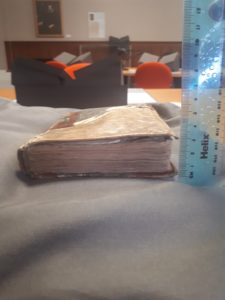
“In 1571, the reputation of Mary, Queen of Scots was in tatters and her supporters scattered to the wind, opening the gates to a barrage of widely uncontested slander. Her weak political position as an English prisoner of three years (and counting) offered little in the way of self defence; enter John Lesley or Leslie, Bishop of Ross and Mary’s primary defendant during her trial in 1568.
A Treatise Concerning the Defence of the Honour of…Marie Queene of Scotland, … with a declaration, as wel of her right, title and interest to the succession of the croune of England: as that the regiment of women is conformable to the lawe of God and nature is a tripartite work. It contains three books, each addressing an independent element of Mary’s circumstances. Initially published in 1569 in response to Mary’s official trial at York and West-minster, in 1571 the Treatise was republished, again in English.
This second edition was a retaliation to the distribution of new anti-Marian propaganda: the infamous Casket Letters, “evidence” of Mary’s involvement in the death of her second husband, Lord Darnley, which had been unveiled during the trial but withheld from public viewing. Their publication was, however, endorsed by Elizabeth I following the discovery of the 1571 Ridolfi plot, a plan to assassinate Elizabeth and to replace her with Mary in which Leslie himself was implicated. With Elizabeth’s intention that Mary be condemned in the court of public opinion, Leslie was committed to defending her.
Leslie’s proximity to this scandal and the text’s controversial contents explain the use of an authorial alias and a false printing location. In this edition (and in the initial 1569 publication) the author is named as the Catholic priest Morgan Phillips, an attempt to deflect the text’s provenance away from Leslie.
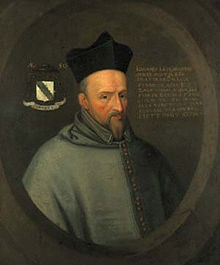
While the cover page bears the name of “Gualterum Morberium”, a printing house in Liège (the the seat of the Duke of Alva, a Spanish noble and general whose Dutch military forces were intended to support the execution of the Ridolfi plot ), this claim is undermined by the presence of the Louvain ecclesiastical authority’s “Imprimatur”, indicating that the book was in fact printed in the latter location. Why the deception? According to Margaret Beckett, this is due to the fact that the Duke of Alva was reluctant to offer Liège’s printing capabilities to the text. Despite his participation in a plot against her, he ‘would not give her Majestie [Elizabeth] cause to be discontent with him, or with the Queen of Scots’. In other words, he was unwilling to countenance an open diplomatic breach by authorising the publication of a treatise in favour of Mary Stuart. Despite having personally condemned those who hadn’t “by pen [or] tongue…once sheweth his face in [Mary’s] aide and defence”, Lesley himself was hesitant to claim this polemical defence of Mary as his own. Although he would later claim authorship of the 1580 edition (and thus, implicitly, those prior editions of 1569 and 1571), he did so only once he had relocated to France. The physical attributes of the work further gesture to its contentiousness; measuring 17cmx12cmx3cm (LengthxWidthxBreadth), this small octavo could be easily transported and concealed.
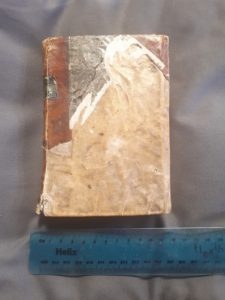

The Treatise’s significance is verified not only by the contemporary English government’s ban on its distribution, but also in this copy’s appearance; the worn pages and cover (a combination of non-original and potentially original bindings), as seen below, indicate frequent use.
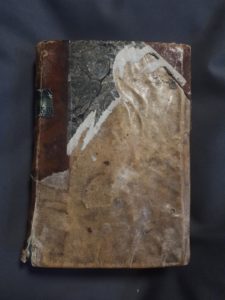
Internally, the Treatise’s endpaper features an eighteenth century engraved illustration of Mary, a feature of unknown origins and specific to this copy from the St Andrews collection. Decorative fleurons are scattered throughout this edition of the text, on the pages respectively indicating the beginning of each “book” and the Preface. The economic landscape of the 18th century gave rise to the trend of book-collecting and the engraved illustration of Mary Stewart is characteristic of the additions often made to older texts during his period, in the belief that the more decorative and elaborate the text was, the better. The fact that this text was not only deemed valuable enough to become a collector’s item, but also received decorative treatment and a new binding, alludes to the significance of Lesley’s work and the fascination with Mary Queen of Scots which has persevered throughout the centuries since her death.
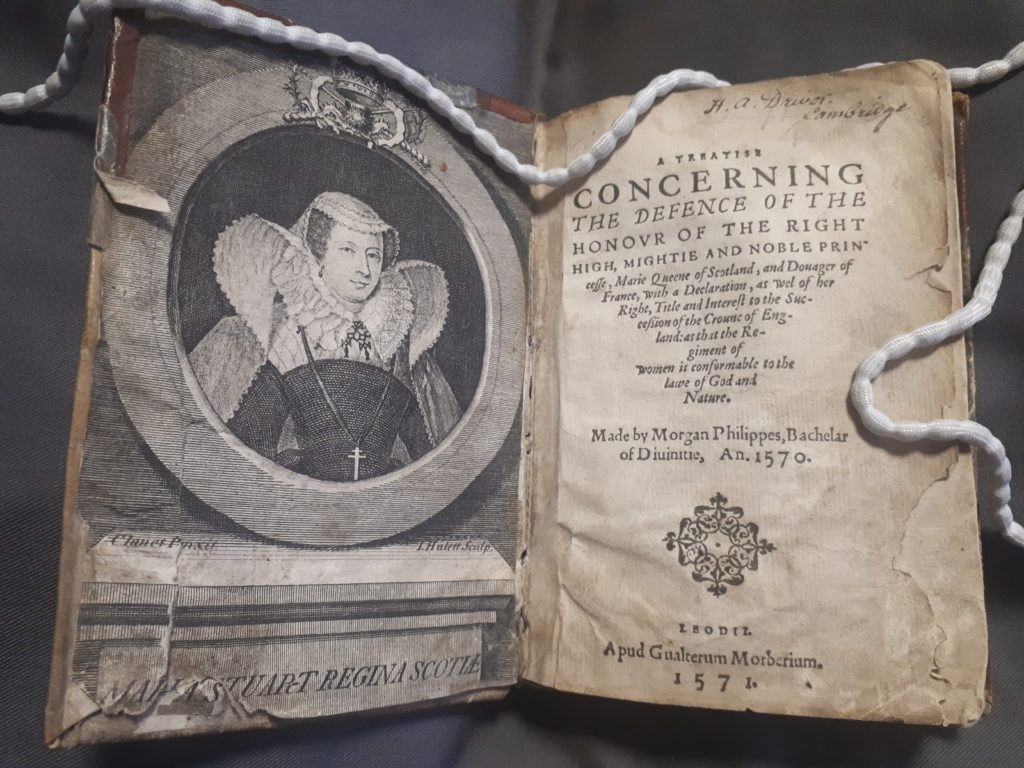
The second book within the text, “Concerning the Succession”, received the most attention contemporarily, owing to the contemporary political tensions surrounding the inheritance of the English crown. In the midst of potential marriage arrangements between Elizabeth and various European nobles, the debate concerning Mary Stuart’s position in the line of succession and the subsequent question of where her son, James VI, now sat following Mary’s deposition, the matter of the English succession was widely debated and hotly contested. The third book (declaring that “The Regiment of Women is Conformable to the lawe of God and Nature”) was largely ignored in a political climate which was generally hostile to female rule, as exemplified in the works of John Knox and George Buchanan. The first, the “Defence of the Honour of…Marie Queene of Scotlande”, was reprinted only once in Lesley’s lifetime, yet went on to formulate “the basis of much later pro-Marian writing” as one of the only contemporary works committed to defending Mary in opposition to those who aimed to blacken her character and her reputation.
Overall, having been unable to restore her crown as one of her primary representatives during her initial trial in 1568, the Treatise represents Lesley’s commitment to the reparation of Mary’s reputation; at risk of his own personal safety, Lesley worked tirelessly to provide an alternative narrative to the life of Mary Stuart, creating a text which campaigned on behalf of Mary’s character, her claim to the English crown and her capacity to rule, irrespective of gender.”
Stephanie Johnston
(4th year MA Hons class)